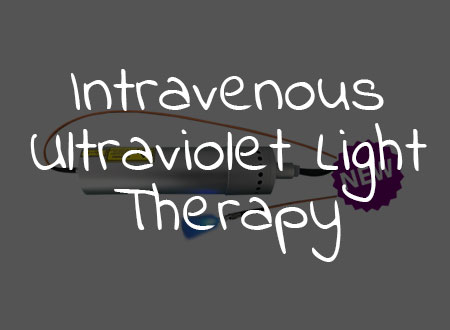



Ultraviolet blood irradiation strengthens the immune system and improves overall health. It has the following therapeutic benefits:
1903: Nobel Price: UV Light for the cure of cutaneous tuberculosis
1920s: Development of a UV therapy device for extracorporeal blood treatment (Emmet Knott)
The technique is known as:
– Ultraviolet Blood Irradiation (UVBI)
– Hematogenous Oxygenation Therapy (HOT) or
– Extracorporeal Photophoresis

Procedure: Withdrawal of 60 cc of blood, brief irradiation with UV light and return into patient’s bloodstream.
1930s to 1950s: UV treatment to combat polio virus and other medical conditions including pneumonia and cancer.
The advent of antibiotics led to a decline in the use of UVBI as a treatment option. Nowadays, with an increasing incidence of antibiotic resistant infections and a desire for more natural therapies, UV light therapy is enjoying rising popularity again.
Pathogens have a higher susceptibility to UV irradiation. The antimicrobial effects of UV light result from increased production of toxic reactive oxygen species (ROS) and delayed pathogen replication. UVA exposure primarily promotes sub-lethal effects, which stop replication and increase the pathogens susceptibility to immune degradation. Pathogen damage also permits the release of antigens in which the immune system can build highly-specific antibodies to the pathogen strain. Cell DNA sequence is interrupted and pathogen ability to bind is inhibited.


Intravenous UV light can be applied in combination with Riboflavin as photosensitizer. Photosensitizers such as Riboflavin are binding to pathogens with high specificity and are then irradiated with intravenous lasers to deactivate pathogens within the blood.
The efficacy of photodynamic therapy with Riboflavin and UV light against bacterial, parasitic and viral diseases has been proven in various in-vitro studies.
Several chemo drugs are light-sensitive. Among these are well-known drugs such as Paclitaxel, Cisplatin or 5-FU. Intravenous UV light can enhance their efficacy significantly. This even allows to lower the dose of chemotherapy.
Watch Dr. Golding talk on Integrative and Anti-Aging Medicine.
Sign up for our newsletter to find out more about the exciting world of integrative medicine
